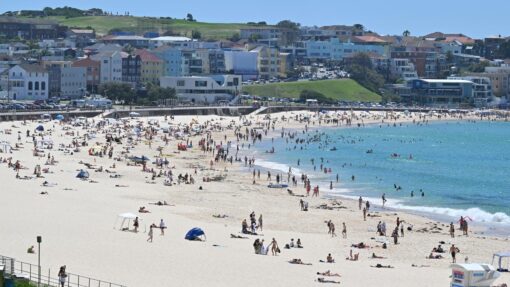‘Wall of water’ wrecked rural town with little warning
Stephanie Gardiner |

Before a ferocious flash flood wiped out much of a rural town, locals were doing all they could to look out for each other.
As low-lying water lapped into Eugowra, in central western NSW, on the morning of November 14, 2022, Diane Smith was preparing to go to another local’s house to cook breakfast for State Emergency Service (SES) volunteers.
The 60-year-old medical receptionist and life-long resident had lived through plenty of floods in the village, which surrounds the Mandagery Creek.
When the water began to rise, Ljubisa “Les” Vugec’s neighbour saw the 85-year-old in his backyard and urged him to get to higher ground.

But this flood was like no other, a coronial inquest has been told, with an unexpected and swirling “wall of water” suddenly hitting the town after 9am.
Ms Smith was last seen clinging to a tree and her body was found two days later.
In his final moments, Mr Vugec was seen trying to coax his dog safely into his house.
His body was found five days later on the edge of a dam 1.5km from his home.
The Mandagery Creek peaked at 11.02 metres that morning with brutal and unexpected force, one metre higher than the previous 1950 record, instantly sweeping houses off their stumps and knocking out telecommunications.
There were 124 winch rescues as locals clung to street signs, shrubs or perched on their roofs to survive, making the helicopter rescue mission one of the largest in Australia’s history.
“The loss of two lives … is devastating. Two loving families have been forever changed,” counsel assisting Sophie Callan SC told the inquest at Orange courthouse on Monday.
“Floods happen, Eugowra had seen them before.
“It’s hoped this inquest … will identify areas for learning, to seek to avoid the loss of lives in the future.”
Local water catchments were already brimming when “constant and intense” rain fell over the region for six hours the evening before the flood, according to a 2023 government report read to the inquest.
It was, at the time, the wettest November day in NSW since 1900.
Ms Callan said water gauges upstream from Eugowra were not providing data in the hours leading up to the flood.
“During the peak of the flood … there were no gauges transmitting any information to enable emergency services to predict just how swiftly the water was coming into Eugowra,” she said.

After hours of low-level inundation, the “wave” hit the village and several people climbed onto the roof of the two-storey Central Hotel to escape the torrent.
About the same time, at 9.07am, the Bureau of Meteorology issued a warning that the Mandagery Creek could reach 10.5 metres that afternoon, she said.
“That was not in accordance with what was happening on the ground at the time,” Ms Callan said.
It was the efforts of SES volunteers who had been observing flood conditions since 1am and two local police officers that prevented more fatalities, officer in charge of the investigation Amy Tremain said.
“The bravery and heroism of those individuals ensured the safety of many Eugowra locals,” Detective Senior Constable Tremain said in her statement read to the inquest.
The inquest is set down for five days before Deputy State Coroner David O’Neil.
AAP


